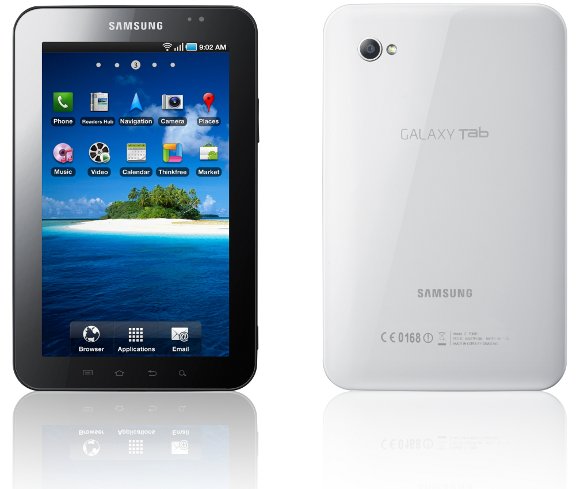
Speaking of Android and mobile, when it comes to reliable multi-touch on inexpensive devices, iOS has really been the only game in town. As I’ve noted previously, competing requires a usable multi-touch chipset. It seems one such chipset is making its way to a shipping product. Matt Gallant points us to our friends at Engadget:
Atmel confirms the Samsung Galaxy Tab uses its maXTouch touchscreen controller
Atmel, for their part, claim their technology is more responsive than competitors like Apple, offering both support for stylus input and faster response times – the latter interesting for music applications. Given how complex touch technology is, in terms of hardware and software alike, I’ll believe it once I test it – but that may be soon.
Update – this chip is also on the Droid Incredible and Evo4, says alien8 in comments. So we do have devices to test. The Tab has a bigger screen area, different hardware, and because this is Android and not made by one company, a different vendor software implementation, so it’ll be interesting to try it, as well.
The news is certainly relevant not only to Android fans, but anyone hoping multi-touch will start to appear in more platforms. And for music input applications, it could be great both for something like TouchOSC for Android (as well as potentially prompting other apps), and perhaps browser-based multi-touch control that could work across operating systems.
For the record, a few specs on the Galaxy Tab; thanks, Samsung PR.
Android 2.2 (Froyo)
7.0 inch TFT-LCD, WSVGA (1024 x 600)
Cortex A8 1.0GHz Application Processor with PowerVR SGX540
3 MP Camera with Auto-Focus and LED Flash
1.3MP front camera for Video Telephony
30 pin connector
WiFi 802.11n / Bluetooth® 3.0
Gyroscope sensor, Geo-magnetic sensor, Accelerometer, Light sensor
16G / 32G internal memory with up to 32G external memory slot
RAM: 512 MB
I’m no fan of proprietary connectors, but the other specs look good. Correction: it’s actually a standard connector — it just wasn’t identified as such. See Matt in comments — it’s a PDMI connector, which could be the answer to all our problems. (Think break-out connection to standard USB3 and USB2, plus video out, among other things.) That is, provided we get any developer support for it; otherwise, it doesn’t matter what those 30 pins can do.
Anyone know if Bluetooth 3 is any better at real-time applications than previous implementations? Side note: a lead engineer from Sony Ericsson last night assured me over dinner I’m reading too much into the spec, so I’m going to shut my mouth and do some actual testing with Bluetooth and MIDI, with some help, to see what happens.